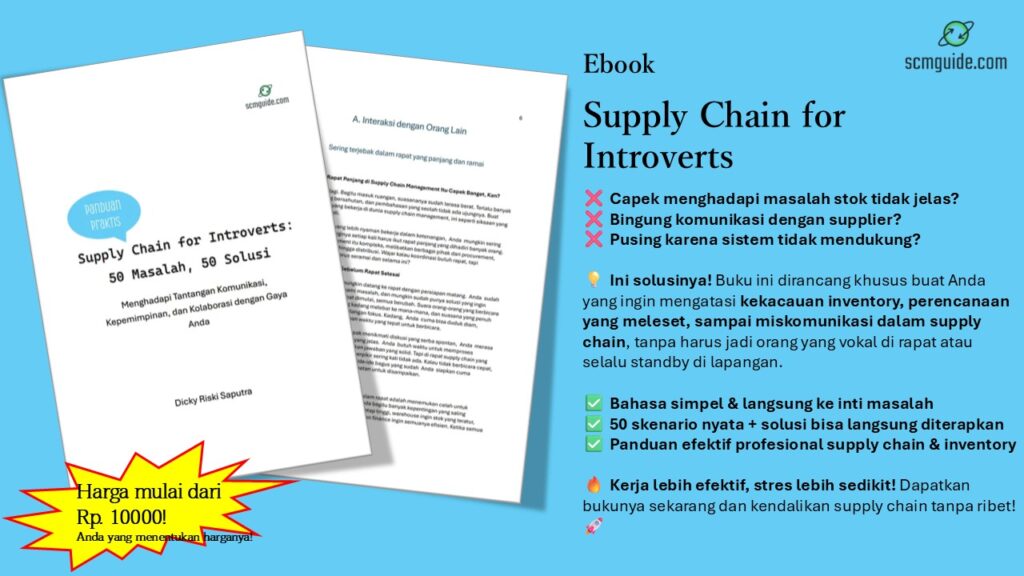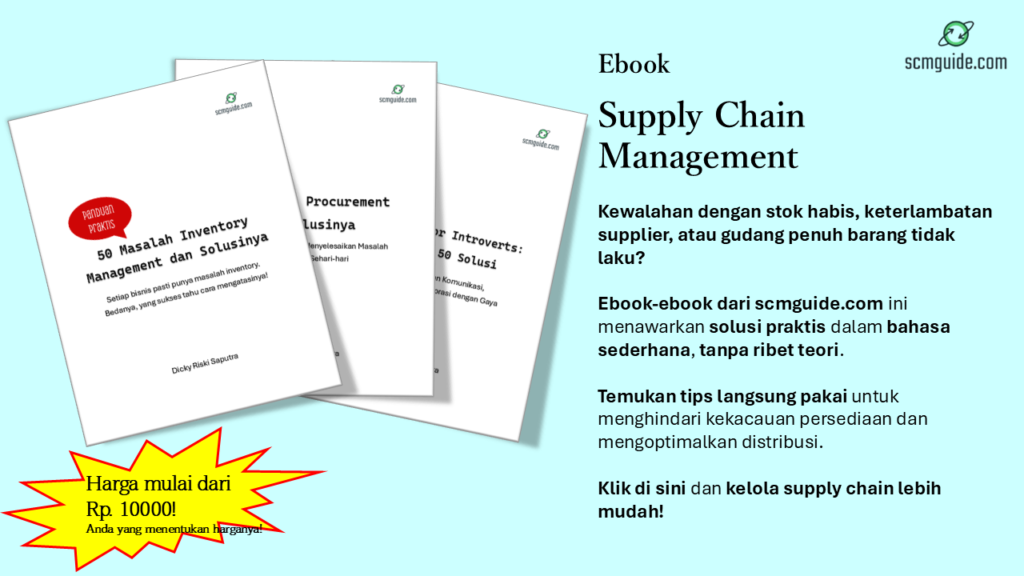After the inventory reduction project moves into the execution phase, the next critical step is ensuring the project stays on track. This monitoring and control phase is designed to keep a close eye on the project’s progress, manage any necessary changes, and make sure the final objectives are achieved successfully. During this phase, strict oversight of key performance indicators (KPIs), risk management, and strategy adjustments take center stage.
Before we go further into this topic, don’t forget to follow my LinkedIn account. You’ll get more helpful insights on supply chain management there.
Table of Contents
Monitoring KPIs
Monitoring Key Performance Indicators (KPIs) is a crucial part of the inventory reduction project’s monitoring phase. KPIs serve as the primary tool to assess the project’s success and provide insights into the performance of the inventory reduction efforts. Consistent and detailed monitoring helps ensure that the project is meeting its set objectives and highlights areas that may need improvement.
Stock Report
The stock report is a key indicator in tracking the success of the inventory reduction project. Key aspects to focus on in the stock report include:
- Inventory Value Reduction: Check if the overall inventory value has decreased in line with the set targets. Compare the current inventory value with initial data to assess how much reduction has been achieved. This provides an overview of how effective the inventory reduction strategies have been.
- Slow-Moving Items: Observe whether there has been a significant reduction in slow-moving items. A decrease in these items indicates that the stock reduction strategy is working effectively. This data also helps evaluate whether rarely sold items are being managed well.
- Target Evaluation: Compare the stock report results against the set targets. If the targets haven’t been met, analyze the reasons and make the necessary adjustments.

Inventory Turnover
Inventory turnover measures how quickly stock moves from the warehouse to customers. Key aspects to monitor include:
- Turnover Speed: Assess whether inventory turnover has improved following the inventory reduction efforts. Faster turnover indicates that stock is more efficient and aligned with demand. This also means that items aren’t sitting idle in the warehouse for long periods, reducing storage costs.
- Trend Analysis: Review the trends in inventory turnover over time. Changes in these trends can indicate the effectiveness of the inventory reduction strategy and whether further adjustments are needed.
- Storage Costs: As inventory turnover increases, storage costs should decrease. Regularly monitor storage costs to ensure that the stock reduction is contributing to cost savings.
Demand Fulfillment
Ensuring that demand can be met with available stock is crucial to the success of the project. Steps to take include:
- Stock Alignment with Demand: Ensure that available stock can meet current market demand. Avoid stock shortages, as they can disrupt operations and lead to missed sales opportunities.
- Gap Analysis: Identify if there are gaps between available stock and actual demand. If gaps exist, analyze the causes and take corrective actions to address the issue.
- Stock Flexibility: Consider stock flexibility to handle unexpected demand fluctuations. Ensure there is a mechanism to quickly adjust stock levels based on changes in market demand.
Interventions and Adjustments
If during KPI monitoring you detect deviations or issues, take immediate action:
- Deviation Detection: Identify signs of deviation from the set targets, such as overly rapid stock depletion or unexpected increases in storage costs.
- Corrective Actions: Take necessary corrective steps to adjust the stock reduction strategy. This could include modifying purchase volumes, changing stock management strategies, or revisiting set targets.
- Ongoing Monitoring: Continue to regularly monitor KPIs to ensure that the implemented improvements are effective and that the project remains on the right track.
By regularly and thoroughly monitoring KPIs, you can manage the inventory reduction project more effectively, ensure target achievement, and adjust strategies as needed to reach optimal results.

Continuous Risk Management
Continuous risk management is a vital aspect of the monitoring phase in the inventory reduction project. While risks cannot be completely avoided, effective management can help minimize negative impacts and keep the project on track. This process involves ongoing monitoring of identified risks and vigilance for potential new risks.
Conducting Regular Risk Reviews
Regular risk reviews are the first step in continuous risk management. This involves periodic assessments of the risks identified during the planning stage to ensure they remain relevant and to evaluate any changes in risk levels. Key actions to take include:
- Evaluating Existing Risks: Review previously identified risks to assess if their levels have changed. For example, if the risk of supplier delivery delays has increased, you need to evaluate how significantly this could impact the project.
- Adjusting Mitigation Steps: Based on your evaluation, modify the mitigation steps that have been implemented. If risks are becoming more imminent or their impacts are rising, you may need to update your mitigation plan for more effective risk management.
- Documentation: Record the results of your risk review and the mitigation steps taken in the project documentation. This helps track changes and ensures that mitigation measures remain current.
Identifying New Risks
In addition to managing existing risks, it’s important to stay alert to potential new risks that may arise during the project execution phase. New risks can emerge due to external changes or factors that were not previously considered. Steps to identify new risks include:
- Monitoring the External Environment: Keep an eye on changes in the external environment that could affect the project. For instance, shifts in economic conditions, new regulations, or fluctuations in raw material prices may introduce new risks that need to be anticipated.
- Gathering Feedback from the Team: Obtain input from team members and stakeholders about potential risks they identify. Sometimes, new risks can be spotted from different perspectives or based on field experience.
- Trend Analysis: Review relevant data and trends related to the project to identify potential new risks. For example, changes in market demand trends can signal risks that might affect stock or supply.

Effective Risk Management
Once new risks are identified and existing risks reviewed, the next step is to manage these risks effectively:
- Developing Mitigation Plans: For each identified risk, create a mitigation plan that includes steps to reduce the likelihood of the risk occurring and minimize its impact if it does happen.
- Implementing Mitigation Steps: Execute the developed mitigation measures. Ensure these actions are effectively carried out and updated as the project situation changes.
- Monitoring and Evaluation: Continuously monitor risks and evaluate the effectiveness of the implemented mitigation measures. Assess whether the mitigation steps are successfully reducing the risk impacts, and make adjustments as needed.
- Risk Communication: Inform the team and stakeholders about the identified risks and the mitigation steps being taken. Clear communication helps everyone understand the situation and contribute to effective risk management.
Sustained risk management is key to keeping the inventory reduction project controlled and successful. By conducting regular risk reviews, identifying new risks, and implementing effective mitigation measures, you can minimize negative impacts and ensure the project stays on track. Flexibility and vigilance in the face of change are essential to navigating challenges that may arise during project execution.
Read also:
- Blog Series: Complete Guide to Inventory Reduction Projects (Part 1)
- Blog Series: Complete Guide to Inventory Reduction Projects (Part 2)
- Blog Series: Complete Guide to Inventory Reduction Projects (Part 3)
Plan Adjustments
In project management, deviations or obstacles often occur, causing projects to veer off course. Adjusting the plan is a crucial step to ensure the project remains on track. This process requires flexibility and the ability to adapt strategies to changing circumstances. Here are some effective steps you can take to make plan adjustments:
Adjusting the Purchasing Strategy
When monitoring reveals that purchasing volumes do not align with the plan, it’s essential to modify the purchasing strategy. Steps you can take include:
- Evaluating Purchase Volumes: Review the purchase volumes for items. If you notice that the procurement of Category C items (infrequently used goods) is too high, consider reducing those purchases. This can help decrease overstock and redirect resources to more critical items.
- Negotiating with Suppliers: If you’re facing supply issues or price fluctuations, negotiate with suppliers for more flexible delivery terms or better pricing. This can help avoid unnecessary stock shortages or excess.
- Adjusting Orders: Modify order quantities based on the latest data. For instance, if demand for a particular item decreases, reduce the order volume to prevent an accumulation of unsold stock.

Adjusting Safety Stock
Safety stock serves as a buffer inventory to manage demand uncertainties or supply disruptions. Adjustments to safety stock may be necessary during significant changes in market demand:
- Demand Analysis: Review the latest demand data and adjust safety stock accordingly. If the demand for certain items has significantly increased, consider raising the safety stock to ensure product availability.
- Evaluating Stock Availability: Ensure that essential items remain available without causing overstocking. Appropriate adjustments to safety stock will help maintain a balance between meeting demand and avoiding excess inventory.
- Implementing Adjustments: Make the necessary changes to safety stock and ensure that all inventory management systems are updated to reflect these adjustments.
Extending the Timeline
If the project encounters unavoidable delays, extending the timeline may be necessary. Steps to take include:
- Analyzing Delays: Review the causes of the delays and assess their overall impact on the project. Identify the affected project components and determine how long the extension will need to be.
- Cost Considerations: Factor in any additional costs that may arise from extending the timeline. Ensure that this extension won’t lead to significant cost increases and is within the available budget.
- Creating a New Schedule: Develop a new schedule that incorporates the timeline changes, and make sure all team members and stakeholders are informed. The new schedule should be realistic and consider the factors that caused the delays.
Documenting Adjustments
Documenting every adjustment made is vital for transparency and effective communication:
- Recording Changes: Document all changes made, including the reasons for adjustments, steps taken, and expected impacts on the project.
- Communicating with the Team and Stakeholders: Ensure that all project team members and other stakeholders understand the reasons behind the adjustments and how these changes will affect the final project outcomes. Clear communication helps prevent confusion and keeps everyone aligned.
- Updating Project Documentation: Revise all project documentation, including project plans, schedules, and budgets, to reflect the adjustments made. This will help maintain the integrity of the project and facilitate progress tracking.
Adjusting plans is an integral part of effective project management. By making the right adjustments to purchasing strategies, safety stock, and timelines, and accurately documenting changes, you can ensure that your inventory reduction project stays on track. Flexibility and the ability to adapt plans to changing circumstances are key to achieving successful outcomes in your inventory reduction project.
Conclusion
Monitoring and control are crucial phases that ensure the inventory reduction project stays on track and achieves its goals. By regularly monitoring KPIs, managing risks continuously, and making necessary adjustments, you can keep the project under control and ensure its success. This phase helps you be more proactive in facing challenges and ensures that all project elements align to achieve optimal results.
I hope you find it helpful!
Please share this article with your colleagues so they can also benefit. For more insights on supply chain management, follow my LinkedIn account. You’re free to use all articles on this blog for any purpose, even for commercial use, without needing to give credit.

 by
by 

